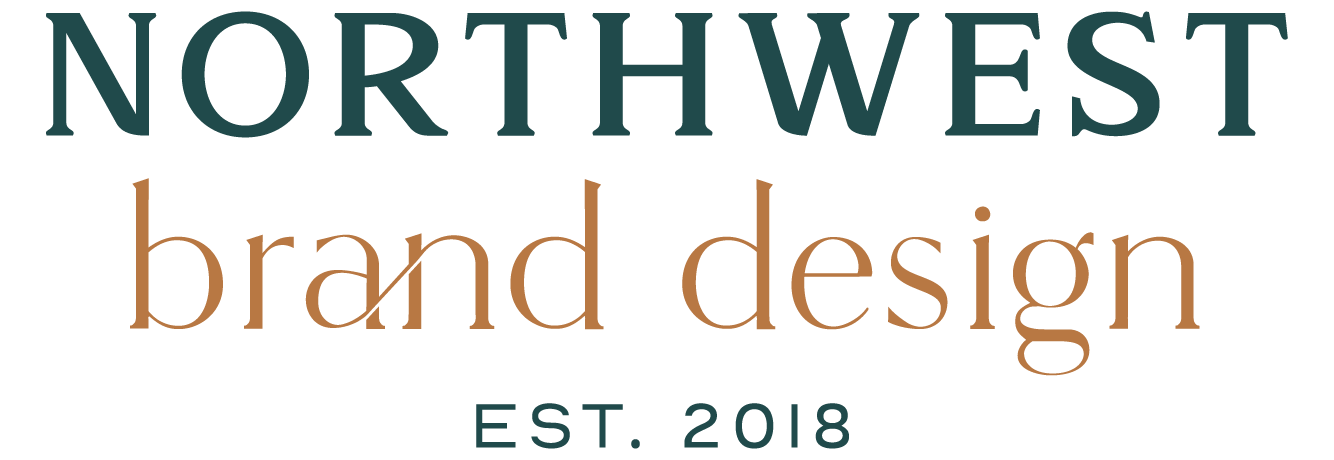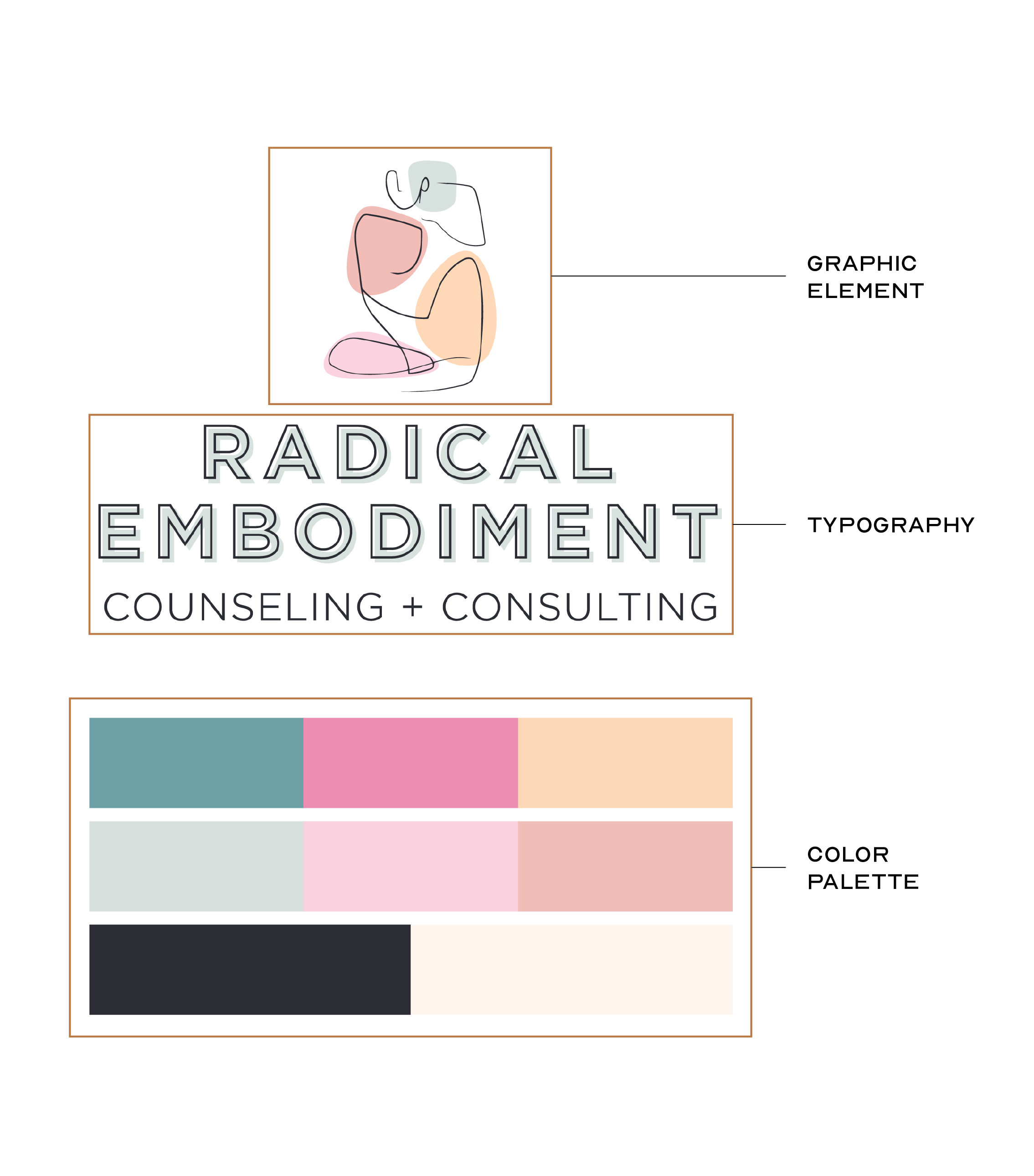What is the Difference between Logo and Brand Identity?
Brand Identity vs. Logos in Design and Strategy
When looking to build your brand and grow your business, it’s important to know the difference between a brand identity vs. a logo. These two terms are often used interchangeably in business which can cause confusion among business owners, marketing teams, and even designers.
Both the brand identity and logos are essential to building a brand, but they are very different and serve various purposes. Building a successful, strategic brand is so much more than just designing a logo, it involves all the aspects of how your brand is presented to your audience. Luckily, we are here to help demystify the brand identity. Continue reading to learn about the individual significance of a logo vs. brand identity and what each includes.
Understanding Brand Identity
Brand identity is more than just the colors your brand uses or the fonts you choose. It is an encompassing term used to describe how your brand is presented. This includes everything from the brand logo to the messaging, tone, and aesthetics. Your branding is the full experience of how customers interact with your brand.
Key Elements of Brand Identity
Brand Name
The brand name is the first touchpoint with consumers. It sets the tone for the brand and influences perceptions. A well-chosen name should be memorable, relevant, and reflective of the brand's values.
Logo
While the logo is a vital component of brand identity, it is just one piece of the puzzle. It serves as a visual representation of the brand and communicates the brand’s values, personality, and should be designed to convey the brand's essence.
Visual Brand Identity
Your brand’s visual identity is made up of many components including:
Logo
Fonts
Color Palette
Brand Elements
Patterns
Textures & Stock Photos
Consistency is crucial in all of your visual elements across all platforms to keep your brand identity cohesive and to communicate your identity clearly.
Messaging
Messaging involves the communication style used to interact with your audience. Keeping your messaging clear and consistent also helps to create a unified brand image.
From taglines to brand voice, the messaging aspect of brand identity involves the communication style used by the brand. Clear and consistent messaging helps in creating a unified brand image.
Brand Positioning
How a strong brand wants to be perceived in the market is its’ positioning. This involves identifying and communicating what sets the brand apart from competitors.
Brand Strategy
Anyone can create a beautiful brand, but not everyone can create a strategic brand. Strategy is essential in creating brand elements that all work towards a common goal. The brand strategy acts as a roadmap for your business and guides all the aspects of how your brand operates, presents itself, and communicates. It’s important to dive deeper than just your brand image and make sure you are communicating the brand's purpose, personality, and key messaging.
Understanding Logos
A logo is a graphic element that serves as a symbol or mark representing a company or brand. It is a clear, visual identifier that should be easily recognizable and evoke the right emotions and associations. Logos are a crucial part of brand identity, acting as the face of the brand and often becoming synonymous with it.
Key Elements of Logos
Graphic Element
Logos typically consist of a graphic element, whether it's an abstract symbol, a letterform, or an illustrative design. This graphic element is crafted to be unique and memorable.
Typography
Certain logos can have custom typography for the brand name. Typography is an incredibly important element of the brand identity as it can portray a certain mood and convey the message of the brand. For example, sans serif fonts are often used for their modern, clean appearance and serif fonts are typically used to convey a more sophisticated or timeless message.
Color Palette
Choosing a brand color palette should be carefully thought out and should not be based on aesthetics alone. Colors have psychological effects on people and can have big impacts on human emotion and behavior. Different colors have distinct associations and can affect how your brand is perceived. For example, blue conveys trust and calmness making it a good choice for banks or therapists. Red can attract attention and can even increase hunger making it an obvious choice for fast food restaurants. Considering the psychology of color is not just a design decision, but a strategic choice that can impact how your brand is perceived in the minds of consumers.
Brand Identity vs. Logo
Unraveling the Confusion
The confusion between brand identity and logos is typically due to the prominence that logos have when first being introduced to a brand. To restate, having a well-designed logo is a crucial component of a brand identity but it is only the tip of the iceberg. Here are some key differences between a logo and a brand identity:
Comprehensive vs. Singular
Brand Identity: Includes the complete set of elements that shape the brand, including the logo, brand patterns, icons, messaging, and overall brand experience.
Logo: A specific visual element that serves as a symbol or mark representing the brand. It is a part, but not the same as, of the broader brand identity.
Representation vs. Identity
Brand Identity: Represents your brand by communicating the vision and mission of your company and how consumers connect with your brand. It should work cohesively to project values, personality, and positioning.
Logo: Represents one specific visual aspect of the company’s brand, acting as a visual identifier. It contributes to the overall brand identity but does not represent it entirely.
Dynamic vs. Static
Brand Identity: A system of dynamic and evolving elements that are cohesive and adaptable to various platforms. The network of each touchpoint your audience interacts with your brand.
Logo: Is typically designed to be static and enduring. Small adjustments may occur but in whole, the logo remains relatively unchanged over time.
Brand Identity, Logo, and the Role of Designers
Designers play a crucial role in shaping both brand identity and brand logos.
Designers have expertise in communicating visuals, market trends and consumer behavior. They have extensive knowledge in how to portray a brand’s mission using color and typography. Businesses, brand managers, and designers should collaborate to develop a comprehensive brand strategy that aligns all elements towards a common goal.
Here are other ways hiring a professional to build your brand is key:
Designers can create a full system of elements that are cohesive and consistent to develop your brand identity.
Designers also have expertise in visual communication, market trends, and consumer behavior which can be instrumental in creating beautiful, compelling and effective brands.
Here's how they contribute to the process:
Designing and Branding
Designers are responsible for creating visual elements that align with the brand's identity. This includes designing logos, selecting color palettes, choosing typography, and creating other graphic elements.
Branded Design
The term "branded design" refers to the intentional use of design elements to reinforce a brand's identity. Designers ensure that every visual aspect, from website layouts to product packaging, adheres to the established brand identity.
Identity Designs
Designers create identity designs that go beyond logos, encompassing the entire visual representation of the brand. This includes designing marketing materials, promotional content, and digital assets that align with the brand's identity.
Consistency Across Platforms
Designers play a crucial role in maintaining consistency across various platforms. Whether it's a social media post, a website banner, or a physical product, the visual elements should collectively reinforce the brand's identity.
The Impact of Brand Identity and Logos on a Company
A well-crafted brand identity and a strong logo can have a profound impact on a company's success.
Here are some ways in which they contribute:
Recognition
A memorable logo and consistent brand identity contribute to instant recognition. Consumers should be able to identify the brand effortlessly, creating trust and loyalty with your audiences.
Differentiation
In a competitive market, a unique logo design and brand identity can set you apart from your competitors. They communicate what makes your brand special and why consumers should choose it.
Communication
Brand identity elements, including logos, are powerful communication tools. They convey your brand's personality, values, and messaging, creating a connection with your target audience or ideal customer.
Trust and Credibility
A cohesive brand identity and a well-designed logo build trust and credibility. Consistency in branding signals reliability and professionalism to consumers.
Market Positioning
Through brand identity, your company can strategically position itself in the market. Whether aiming for luxury, affordability, innovation, or tradition, your brand identity will communicate your positioning to your audience.
Adaptability
A solid brand identity can adapt to evolving market trends while maintaining core elements. This adaptability ensures that your brand remains relevant and resonant with changing consumer preferences.
The Takeaway
In the complex world of branding and design, becoming clear on the differences between brand identity and logos is crucial. While logos serve as visual identifiers, brand identity encompasses a broader spectrum of elements, including messaging, design aesthetics, and overall brand experience. Both are integral to your company's success, working in harmony to create a strong and enduring brand.
A well-designed logo, when integrated into a cohesive brand identity, becomes a powerful asset in building a solid and recognizable brand. As the business landscape continues to evolve, understanding the nuances of brand identity and logo design will remain an important component to successful brand building and strategic positioning in the market.
If you are ready to take the next step in building your ideal brand, reach out to us today to schedule a free consultation. We can’t wait to help bring your brand to life!


